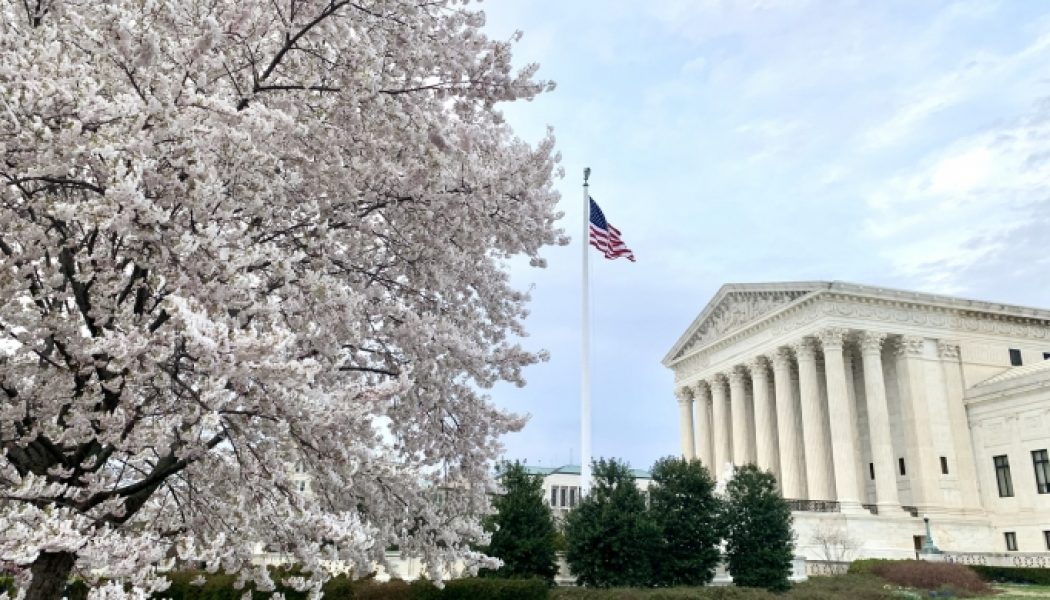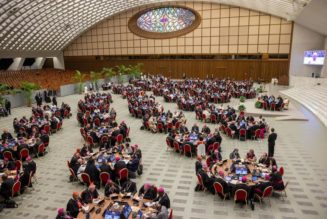
COMMENTARY: The 5-4 opinion on June Medical Services v. Russo disappoints pro-life hopes that the case could overthrow Roe v. Wade.
Today, by a vote of 5 to 4, the U.S. Supreme Court struck down a Louisiana law requiring abortionists to have admitting privileges at hospitals within 30 miles of their practice. The opinion in June Medical Services v. Russo is quite fractured and legally technical. It does not bring the pro-life movement any closer to overthrowing Roe v. Wade and Planned Parenthood v. Casey; but it does not likely move us further away from that end either. More litigation to that end is still required.
In June, a plurality of Justices (Breyer, Ginsburg, Sotomayor and Kagan) voted to strike down the Louisiana law on the grounds that the burdens it imposed upon women were greater than its claimed health benefits, just like the Texas admitting-privileges law struck down in the 2016 case of Whole Woman’s Health v. Hellerstedt. Chief Justice John Roberts provided the fifth vote for the Court’s holding in a concurrence in which he disagreed with the plurality’s standard for striking the law down, but agreed that the law was unconstitutional under the standard established by the Court in the 1992 Planned Parenthood v. Casey decision.
Justices Clarence Thomas, Neil Gorsuch, Samuel Alito and Brett Kavanaugh dissented, with only Thomas using his opinion as an occasion to also declare Roe v. Wade an unprincipled decision that should be overturned.
June Medical raised several legal questions with important implications for the future of abortion law: first, whether or not abortionists have what is called “standing” to challenge laws that were enacted in order to better vet abortionists to ensure that they provide safe medical services to women. “Standing” requires that the party challenging a law has or will suffer an actual injury to a legally cognizable interest. This question is important because the vast majority of cases seeking to overturn abortion restrictions are filed by abortion doctors and clinics, not by individual women. It is also important because of the obvious conflicts of interest in cases like this one, where abortionists are seeking to quash a law that could make abortion safer for their patients.
The five justices in the majority concluded that the abortionists and abortion clinics had standing, even though abortionists do not have any sort of “right” to practice abortion that the Louisiana law burdens.
The plurality claimed that the state of Louisiana had “waived” the problem of third-party standing in the two lower federal courts that had heard the case. But they also noted that abortionists had previously generally been permitted to sue to defeat abortion restrictions, and that they should be permitted to challenge a law that might “indirectly” harm women’s interests in obtaining a convenient abortion.
Three of the dissenters (not including Kavanaugh) agreed that abortionists and clinics lacked standing to challenge the Louisiana law. In lengthy treatments of Supreme Court precedents about the importance of standing in order for the Court even to have the authority to hear a case under its Article III powers, Justices Thomas and Alito forcefully pushed back on the majority. Alito and Gorsuch spoke particularly fervently about the dangerous conflict of interest in allowing doctors to overthrow laws designed to safeguard the patients in their care. Gorsuch penned a detailed portrait of the dangers that abortionists in Louisiana pose to their patients. He noted the extraordinarily lax reviews the clinics conduct prior to hiring abortionists, reporting that abortion clinics had previously allowed ophthalmologists and radiologists to perform abortions! He also pointed to the “dozens” of ethical and safety violations that Louisiana abortion clinics had committed in the past.
The next important question the Court considered is the appropriate standard for reviewing abortion laws. The plurality justices stood by the standard that the Court (then including Justice Anthony Kennedy) adopted in Whole Woman’s Health. It allows the Court to conduct the kind of test that legislators use when they evaluate whether or not to pass a law: whether the benefits of the law outweigh the burdens the law imposes, considering the law’s object. This test differs from the one announced in the Casey decision. There, the Court did not claim a right to balance benefits and burdens; rather, it analyzed whether the effects of an abortion restriction constituted a “substantial obstacle” or “undue burden” upon a woman’s access to legal abortion.
Which test the Court adopts matters a great deal. The Whole Woman’s Health test allows the Court to perform a legislative task forbidden to it under Article III of the Constitution. It allows the Court to pick and choose what evidence it wants to highlight on benefits and burdens and give almost no deference at all to state legislatures’ findings. This is equivalent to (in a famous legal phrase about cherry picking) “looking over the crowd and picking your friends.” It means more state abortion restrictions become subject to the whims of the Court’s reigning majority.
Five justices, including Chief Justice Roberts and the four dissenters, rejected the Whole Woman’s Health test. But because Roberts believed that the Louisiana law would constitute a substantial obstacle to abortion for a large fraction of Louisiana women, he voted to strike down the law, even as he disagreed with the test the majority employed to do it!
The third important question June Medical considered concerns whether or not the law makes abortion too difficult to obtain for a large number of Louisiana abortion clients. The majority held that it did. Employing detailed geographic and doctor-specific details (and even maps, printed in the opinion), the Court concluded that the vast majority of doctors and clinics would go out of business were the admitting-privileges law to stand, leaving many women without a sufficiently-close-by abortionist.
This part of the plurality opinion extended tremendous deference to the claims of the abortionists and the clinics, regarding how hard they had tried to obtain admitting privileges, and what would happen if they failed. On this matter, Justices Alito and Gorsuch were particularly appalled. Justice Alito — continuing his theme of abortionists’ conflicts of interest — pointed to the doctors’ lackluster efforts. He highlighted emails from one of the abortionists revealing that during his alleged “good faith” search for admitting privileges, he took into consideration that a denial of privileges would best support a victory for his side of the case. Justice Gorsuch noted that one Louisiana doctor already had such privileges, that one hospital was already changing its admitting-privileges rules in order to make it easier for abortionists to succeed, and that privileges requirements applied to other types of ambulatory surgical centers (for, e.g., colonoscopies, Lasik eye treatments) had not diminished the number of those centers able to continue operating.
Furthermore, even while objecting to the majority’s “balancing test,” Justice Gorsuch wrote a detailed summary of all the health benefits of the law attested by experts testifying before the Louisiana Legislature. In addition to those described above (ameliorating lax clinic rules for licensing doctors, improving clinics’ ethics and safety records), Gorsuch highlighted the testimony of women abandoned by their abortionists to seek follow-up care, after the doctors had botched their abortion procedures.
Finally, only Justice Thomas took direct aim at Roe and Casey. In memorable language, he referred to the reading of the Constitution on which it is based as “legal fiction” and the “putative right to abortion [as] a creation that should be undone.” He wrote that it is “farcical” to imagine that the legislators who created the 14th Amendment’s “due process” language intended it to protect a procedure nearly completely banned in every state and territory in the U.S. at the time it was passed. He called Roe a “demonstrably erroneous” decision.
On this subject, Gorsuch, Alito and Roberts only noted that no one had asked for a reconsideration of the constitutional right of abortion. Roberts, instead, opined that the work before the Court involved only the application of existing precedent — in this case Whole Woman’s Health and Casey — to the question of the constitutionality of the Louisiana law before it.
Helen Alvaré is a professor of law at the Antonin Scalia Law School, George Mason University.







